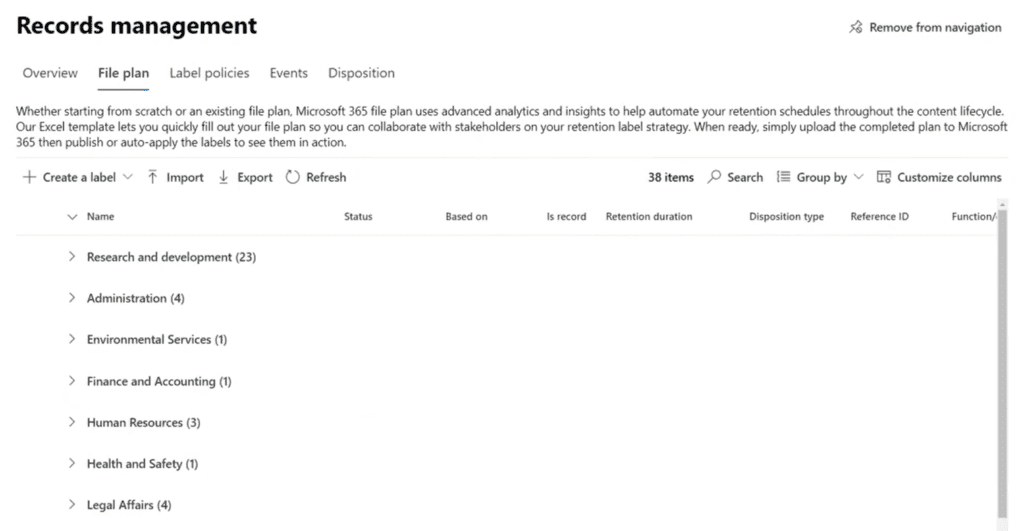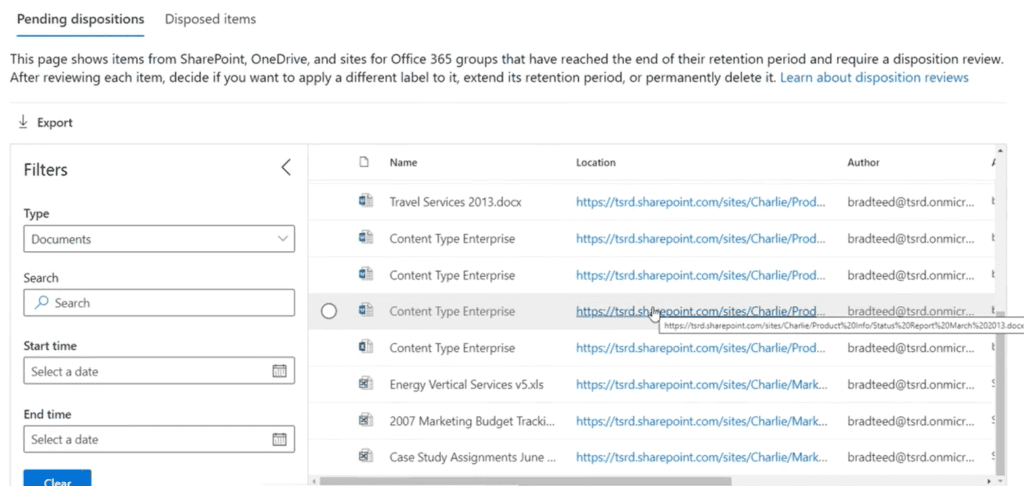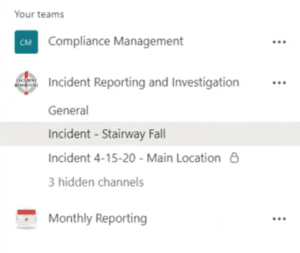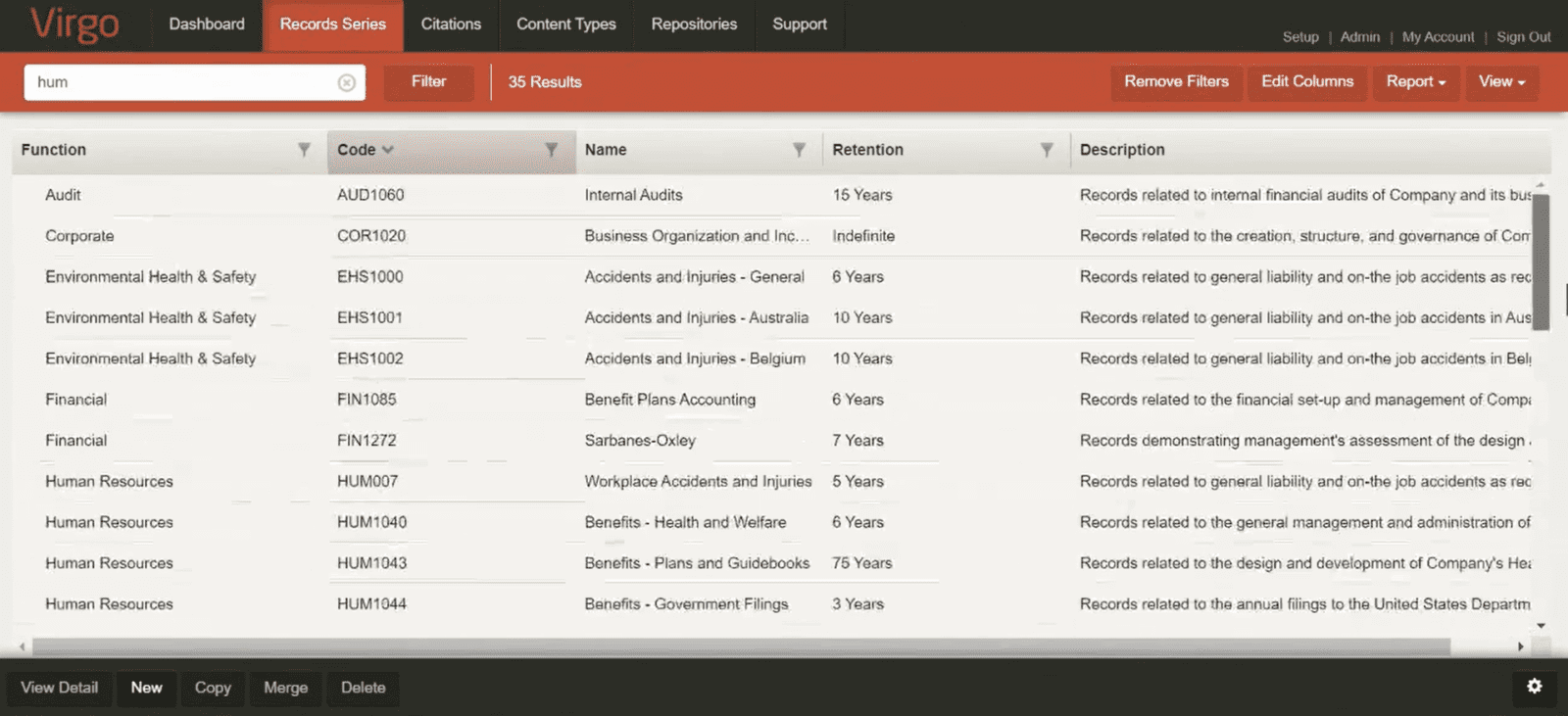
2020 has forced the hand of many organizations to issue new remote work mandates with little to no planning time; learning the ropes as they went along. As part of that process, businesses using Microsoft 365 and collaboration platform Microsoft Teams have found that their usage of them to enable remote or distributed work has had a particularly large effect on the generation of new record types.
Between conversations in various channels and the sharing of files, new records are created at an exponential scale in Teams, which can make managing them seem an overwhelming task.
The best place to start is with an understanding of what tools are available out of the box as well as what technology could be added on to help standardize records management in the Microsoft 365 environment.
Built-in tools for managing Microsoft Teams records
Microsoft 365’s Compliance Manager has a wide range of tools to help manage your information; not just for Teams, but the entire suite of apps. These give records managers the ability to protect, govern, mitigate risk and more.
Nearly every record generated within the Microsoft 365 environment can be subject to retention rules, which can be tagged accordingly by a records or compliance manager with ‘retention labels’, more commonly referred to as just labels. These labels are then assigned to different locations within the Microsoft 365 ecosystem, from Teams, to Groups, to SharePoint, to Outlook or Exchange where email resides. Managing and updating these labels regularly serves as the crucial connection point between the content and your actual retention rules and policies.
By default, these retention schedules can be determined based on creation date, by the label date, and by the last modified date. Microsoft 365 also supports event-based retention which can be triggered by metadata or another event through the compliance center. And with event-based retention capabilities, you can add in other dates that may affect the record, as you may see with an asset sale, an employee termination, et cetera.
When a disposition arises for these files, there’s a review process that occurs in the same section of Microsoft 365 within the Compliance Center. The disposition tab will show all categories of records that you’re tracking, maintaining and managing. As items come up for disposition, they will be listed underneath each one of the appropriate retention categories. This process can and should vary from organization to organization as it largely depends upon the specific level of compliance required by your jurisdiction or industry.
One of the perks of the Microsoft retention schedule is that you can customize to exactly the level you wish. You can set up security so that different individuals can look at different categories of records and participate in that approval. If you want to select a number of these and approve all of them at the same time, you can. All of these will then be tracked automatically by Microsoft 365.
Microsoft Teams Records and Retention Schedules
Microsoft Teams is one of the newer additions to the Microsoft suite and is considered the platform’s “hub for team collaboration,” which integrates people, content and tools all in one place.
Collaboration in Teams occurs in one of three places:
- Channels – messages are visible to all fellow Team members
- Private channels – messages are visible to a defined sub-set of fellow Team members
- Chats/ group chats – conversations are on an ad hoc basis with any colleague or group of colleagues (regardless of whether or not those colleagues are part of their Team).
By default, Teams chat, channel, and files data are retained indefinitely.
Should the occasion arise, Microsoft 365 also allows users to apply a label retroactively. A records manager or compliance officer with access to the Compliance Center can publish the label out and have that applied automatically.
This allows you the ability to go back to the proliferation of Teams at your organization and actually apply compliance. Any records generated past that time will then have that label automatically apply.
The ability to retain or mark content for disposition with Teams isn’t perfect. There are a few caveats to retention policies within teams including:
- Teams requires its own retention policy – Teams will not be affected by org-wide retention policies.
- Private channel messages have no ability to be retained – as of this writing, any private messages between individuals or groups at an organization outside of a public channel will not and cannot be retained.
- Teams has fewer retention settings than other aspects of Microsoft 365 – For instance, unlike other more amenable apps, it is impossible to apply a policy to content that contains keywords or sensitive information.
- There is a time lag for disposition – Depending on service load, it may take up to seven days to permanently delete chat and channel from backend storage and the Teams app and will remain searchable with any compliance tools until they have been permanently deleted.
When Microsoft’s built-in tools aren’t enough
The biggest downfall of Microsoft’s retention policies is easy to spot – they’re only useful for records generated or retained within the platform. This means that the Compliance Center is just one more place that retention policies must be updated to be consistent and compliant across your entire information management system.
Given the frequency with which these laws and regulations change, it can make keeping your retention schedule in compliance challenging – Microsoft 365 is just one more place to manage it. That’s why many businesses decide to hire an external partner that can manage their retention policy wherever company information lives, regardless of medium. Avoiding the duplication of data and reducing the chance of error as well as the number of times that data entry is required, is key.
The best solution is to update your retention schedule once and have it pushed into multiple different depositories. Solutions like Virgo can give you a “command central” where you can ensure that you have a compliant record retention schedule which can then be pushed into Microsoft 365 and document cloud platforms like Box, other EPM systems, and your offsite physical storage as well.
That way, all your updates can be done in Virgo just once, and from there they can be set up to publish automatically to these different zones where your records live. The solution can also help to identify when a copy of a copy of a copy is making its way around an organization to remove duplication of communication as soon as it starts. When something is supposed to be deleted, you can be sure it will be flagged.
You can apply labels through a number of different options, including lists or folders. The folders are organizational characteristics that can represent locations; more specific ones such as facility, floor, room, aisle, and rack, if you have many physical records.
Conclusion
Microsoft most recently reported reaching 44 million active users in March and 75 million in April of this year. While there has not been any additional usage reporting since, the total number of users could easily be surpassing 100 million as of this writing.
The beauty of Microsoft 365’s integrated retention schedule is that organizations can retroactively go back through their Teams ecosystem and decide how they want to apply policy to the information within it.
Now that things have settled down at least slightly, it’s time to stop and look back at changes made at the outset of the pandemic and start moving toward a more comprehensive retention schedule that works not just for teams but all record types.
Clients in complex, highly regulated industries rely on Virgo to track retention compliance specific to their operations, ranging from oil and gas/energy to healthcare, manufacturing, insurance and more.
Find out why our clients choose Virgo by signing up for the free 90-day Starter Kit today.








